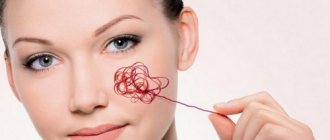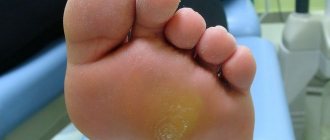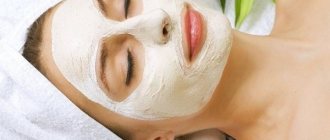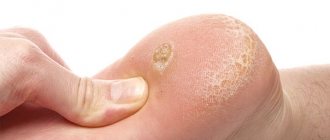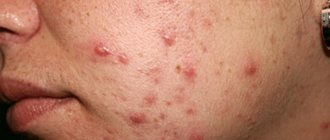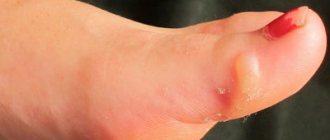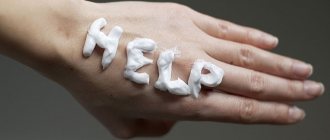How to remove hair dye from your face and hands. 1 Removing paint using soft products
Before dyeing strands, it is important to protect your hands with cellophane gloves, and lubricate exposed areas of the body with baby cream. Apply the oily product generously with a cotton pad to the forehead, neck, and ears.
If the coloring composition gets on the skin, you can remove it using:
- Soap solution - moisten a sponge in the soapy mixture and gently wipe the skin.
- Baking soda - make a soft paste of baking soda and warm water, apply with a swab to the problem area, lightly rub the stain, remove the residue with running water.
- Vegetable oil is an excellent analogue of alcohol-containing compounds that can cause skin irritation. Moisten a cotton pad with oil and wipe the contaminated areas.
- Toothpaste - apply to the stain until the composition dries completely, clean the problem area with running water.
- Kefir - apply with a thick cloth to contaminated areas of the body, leave for 15 minutes and rinse with warm water.
- Use wet sanitary napkins to rub the problem area, this way you can remove both fresh and old stains.
- Apply rubbing alcohol or acetone to the stain with a cotton swab and gently rub the stained areas.
- Apply makeup remover - milk or foam directly to the stain, after a few minutes remove with a damp towel along with the paint.
- Lemon – rub a fresh stain with a slice of lemon, then rinse with warm water and wipe dry with a towel. Do not use the product if you have an allergic reaction to citrus fruits.
- Professional products for removing paint from skin: Igora Color Remover, Dikson Remover, Utopik Cleaner and Hair Light Remover - can be purchased at a cosmetics store. They do not cause irritation and easily remove fresh and old stains. They are flawless, but expensive.
There is another extraordinary way - wedge with wedge, suitable for the most desperate. You need to apply the remaining paint to the old stain, rub the stain a little with a sponge, and then wash it off with water or soapy water.
If you urgently need to wash yourself, then effectively use acid peeling for your face and hands - apply the composition to the skin until it swells, gently rub the contaminated areas. Remove any remaining product with running warm water. Additionally, this procedure makes the skin of the face and hands soft and velvety.
If grandma’s advice did not help you cope with a difficult task, then it is recommended to purchase a curling product, Lokon, at a cosmetics store. The effectiveness of the composition in removing paint marks is maximum. The only negative is the strong smell. The product removes stubborn marks on any part of the body.
Many cosmetic companies produce special products to remove hair dye from the skin. Let's look at some of the most popular options for such substances:
- Hair Light Remover.
- Utopic Cleaner.
- Igora Color Remover.
The most affordable means include:
- Curl.
- Regular shampoo.
- Balm.
They are just as effective as expensive professional removers.
If you doubt the quality of professional removers, you can use improvised means to remove “colorful” stains:
- Lemon juice - After soaking a cotton swab in the liquid, gently wipe the paint stain. The acid in lemon juice has a whitening effect on the skin. Do not overdo it, as this same acid can cause irritation and redness of the skin.
- Hydrogen peroxide - dilute it with water in a one to one ratio. Next, treat the contaminated areas with a cotton swab soaked in this solution.
- Ethyl alcohol - be sure to follow safety precautions when using it, as it can damage the outer layer of the epidermis. This product should not be used on the skin near the eyes.
- Sunflower oil is a great option for removing hair dye from your skin. Soak a piece of cotton wool well in the oil and wipe off fresh stains.
- Soda - mix baking soda with a small amount of water to the consistency of thick sour cream. Apply the mixture to a sponge or cotton pad and carefully wipe the areas affected by the paint.
These methods are time-tested and are in no way inferior to store-bought washes.
It is better to remove stains on the forehead and temples from coloring using methods that have been tried by many women at home. Once you have chosen the appropriate method for removing hair dye from your skin, you can use it continuously.
Professional cosmetologists advise using removers, products specifically designed for removing hair dye. They are used in salons, hairdressers, and at home according to the instructions.
You can remove remaining traces of paint using alcohol-containing cosmetics. Lotions, balms, and tonics are suitable for this.
If there are none, then you will need to use alcohol tinctures. Excellent results are achieved when using calendula, ginseng, and rhodiola. You can also carry out treatment using eau de toilette and perfume. As a last resort, use alcoholic drinks.
Act quickly as soon as paint gets on your hands. You have a few minutes before the dye stains the skin. Even if the paint has already begun to absorb into the skin, the sooner you get down to business, the easier it will be for you to remove it.
- As you know, skin consists of several layers. The paint, getting on the skin, will gradually stain layer by layer. If you don't try to remove the dye right away, it will stain the deeper layers of your skin and make it very difficult to remove.
- If the dye is absorbed and stains the deeper layers of the skin, then you will have to use more aggressive products that can damage the skin.
Squeeze some toothpaste (not gel) onto your hands and rub the paint stains well. Toothpaste that contains abrasives that help remove plaque will help you remove paint from your hands. Once the dead stained skin cells are removed, your hands will be clean again.
- Rub the skin for approximately 30 seconds and then rinse with warm water.
- If you can't remove paint stains, try again, only this time add a pinch of baking soda.
Use baby oil, petroleum jelly or olive oil. Apply and leave the selected product overnight. This is a suitable method if you have sensitive skin. The oil will slowly absorb and break down the paint while softening and moisturizing the skin on your hands.
- Apply the oil to your skin using a cotton swab or damp cloth.
- You can stain your bed linen with oil if you touch it while you sleep. To avoid this, wear gloves or clean socks on your hands.
- Use a cotton swab to remove excess oil from your hands and wash them with soap.
Use dish soap and baking soda. Using these two products, try to wash the paint off your hands. The dish soap will dissolve the paint and the baking soda will exfoliate the skin. Apply these products to your skin, rub it, and then rinse with warm water.
- Use a mild dishwashing detergent that will not dry out your hands.
Apply makeup remover to your hands and rub it onto the stains. Since this product is intended for use on the face, you don't have to worry about it harming your hands. If the stain is not too deep, makeup remover will remove it.
- Apply makeup remover to a cotton swab or washcloth and rub it onto the stain. Wait at least five minutes before washing the product off your hands.
- If you have makeup remover wipes on hand, you can use them to remove paint from your hands. By using a wipe, you can exfoliate dead skin cells and remove paint.
Use special products to remove paint from your hands. If you are not ready to use home remedies and want to approach this issue professionally, you can purchase a special product for removing hair dye from the skin of your hands. Such products are sold in the form of a solution or wipes.
The durability and color of the paint affects the corrosiveness of the marks: dark and bright colors are more noticeable on the skin and nails, and light colors are less noticeable. As for durability, everything is clear here. Regardless of how your dye acts - it envelops the hair (unstable, tinting) or penetrates its structure (persistent) - the stains from it eat into the stratum corneum of cells in the same way.
How to erase paint marks on your hands
Excess color pigment. Oddly enough, in the case of pigment, you can use what triggered its appearance. If the stain has already dried, the remaining paint is applied to it until it completely softens. Then the pulp is ground and quickly washed off with running water; Ash. This is a kind of ash that has long been known to everyone thanks to its cleansing abilities. To remove paint, it is important to prepare an aqueous solution of ash, or apply it to the skin using a damp disc. Rubbing should take place along the massage lines, and the residue should be washed off with water. If you don't smoke, cigarette ash can be replaced with paper ash.
Baking soda
Surely many people know about its whitening characteristics. But in its pure form it is not recommended to apply it to the face; before doing this, mix soda and water in equal proportions. As a result, you will end up with a thick porridge. Cover the stain with the prepared mixture, then rub it immediately;
Nail polish remover
It is very aggressive, irritates the skin and can provoke an allergic reaction. Has a persistent pungent odor. It is rational to use it solely as an exceptional measure. It is recommended to apply the product to a cotton pad and remove any remaining paint using patting movements.
Important! After achieving maximum results, you should cleanse your face with water and apply a nourishing cream to the treated areas.
How to prepare for painting without getting dirty
To prevent your skin, clothes and furniture from getting stained with hair dye, you should follow just a few rules:
- use gloves;
- wrap your neck with film;
- put on a special cape or old clothes that you don’t mind getting dirty;
- lubricate the forehead, temple and ears with fatty cream;
- when painting, use a brush;
- After applying the dye to your hair, put a shower cap on your head - this will help avoid drops of dye on the floor and furniture.
Hair dye stains eat into the skin and fabric very quickly, so you need to act immediately after discovering the stain, because the longer the pigment is exposed to the open air, the more it oxidizes and it becomes more difficult to remove. It's best to take precautions ahead of time and prepare for painting.
It is much easier to prevent such troubles from occurring than to take action after paint stains appear in unwanted places.
It is recommended to follow the following rules:
- Lubricate the hairline, back of the head and top of the ears with rich baby cream.
- Wear plastic protective gloves on your hands.
- Expensive hair dyes are sold without plastic gloves. Don't forget to purchase them.
- If hair dye does get on your skin, immediately wash it off with alcohol or a rich cream. Fresh stains are much easier to remove.
If a stain or drip is noticed immediately, removing paint from your face will not be difficult at all. This is what hairdressers do in salons - they try to act quickly, preventing the composition from being absorbed into the skin.
Procedure:
- Soak a napkin or sponge in warm water.
- Quickly wipe the paint stain off your face.
In the case of dried stains, this method will be ineffective, and you will have to use one of the home recipes or a remover.
When starting the hair coloring procedure, you should take measures to ensure that your clothes and skin are not stained with dye. Do not neglect the rules for conducting operations with:
- protecting your hands with special gloves that come in a box with dye;
- wrapping the neck with film or waterproof cloth;
- lubricating the forehead, ears with Vaseline or baby cream;
- using a special brush for painting.
It is advisable that someone help carry out the procedure, otherwise it is difficult to dye your hair efficiently on your own. And with an assistant, painting can be done without staining your skin or clothes.
How and with what to remove hair dye from nails?
There are many ways to remove hair dye from skin. But first of all, you should determine the type of paint. Coloring agents are divided into three groups:
- Organic - this type includes dyes that contain natural substances (for example, henna or flower extracts). They radically change the color, making it more contrasting and bright.
- Physical - this type includes tonics and balms. They stay on the hair for no more than a month, as they quickly wear off with frequent washing.
- Chemical - this type of coloring substances includes mousses, creams and gels. They penetrate very deeply into the structure of the hairs, thereby changing their color.
A standard everyday situation - a woman was dyeing her hair and the dye got on her hands. We offer several cleaning options:
- toothpaste;
- oil (vaseline, olive, and even baby oil will do);
- dishwashing detergent and baking soda;
- makeup removers;
- professional paint removers;
- Polish for hair;
- nail polish remover.
Note! If dye gets on the skin of your hands, you need to act as quickly as possible, because after a few minutes the pigment will be absorbed into the skin and removing it will be much more problematic.
Deciding on how to remove paint from your hands, as well as from other parts of the body (except the scalp) is a purely individual matter. You will find several methods here, and you can determine the one that works best for you.
How to get rid of hair dye on your hands?
If to remove absorbed hair dye from the skin of the face it is necessary to use only the most gentle and harmless means, then more aggressive substances can be used for the hands. Of course, all methods suitable for facial skin will also be relevant for hands. But if you need to quickly and effectively remove paint from these parts of the body, then you can use a number of other methods:
- Soak a cotton pad in hydrogen peroxide and apply it to the stained area of your hands.
- The same manipulation can be done with acetone or nail polish remover.
- If you need to use alcohol on your face very carefully, then in the case of your hands, you can thoroughly rub the pigmented area without fear of burns or damage.
- Vinegar, which contains acetic acid, will remove any stains from your hands. As for the face, you can also try using this remedy, but in this case it would be better to use only natural apple or wine vinegar.
- Citric acid is considered an excellent bleaching agent (it is advisable to use natural lemon juice). It is enough just to thoroughly wipe the stained areas of your hands with this type of acid.
How to remove hair dye from nails?
Of course, we all know that when dyeing hair, it is imperative to use protective hand gloves. But sometimes even they are not able to protect our hands from the effects of the active pigments that make up the coloring agent. If paint gets on your hands, that’s not so bad, but if your nails are stained, you’ll have to try hard to whiten them.
- Naturally, nail polish remover will help get rid of paint.
- A popular way to remove pigments from nails is to eat raw, peeled potatoes. After cutting a potato in half, dig your nails into it and then polish the nail plate with it. Potato starch is considered an excellent bleach.
- A bath of lemon juice and vinegar will also help whiten the nail plate. To prepare it, you need to dissolve 1 tsp in 100 g of water. vinegar and juice of half a lemon. By dipping your hands into the resulting solution for just 10 minutes, you can noticeably lighten your skin and nails.
- From time immemorial, our grandmothers and mothers used only one method to effectively clean their nails - hand washing. Laundry soap is especially helpful in this matter.
- You can remove dirt and paint from under your nails with an old toothbrush. You can dip it in any of the previously listed products and run it under your nails.
- If the cuticle of the nail is stained along with the plate, then it is easier to simply remove it - using a special product and an orange stick or ordinary cuticle scissors (tweezers).
Whatever paint remover you choose, be sure to treat the cleaned area of skin with a moisturizing and toning agent after the procedure, since any chemical or mechanical effect on it can cause damage.
Hydrogen peroxide
All hair coloring products can be divided into three groups:
- Natural. These products include henna, basma, and plant extracts. When using them, you will not be able to achieve sudden changes in your image. Natural dyes saturate the natural hair color, making it brighter and deeper.
- Physical. These include tinted shampoos, balms, gels and tonics. Tinting shows short-term results. Just 5-6 washes with regular shampoo, and your hair will return to its natural color.
- Chemical. These products include cream paints, mousses and gels. They are created for dramatic changes. Penetrating into the structure of the hair, chemical components change the pigment, helping women cover gray hair without a trace or, conversely, turn into an ash blonde, being the mistress of lush dark hair.
Useful tips
At the end of the cleansing process, it is necessary to apply a nourishing cream to the skin to relieve irritation. It is important not to overexpose the coloring composition to your hair, then there will be no problems with removing stubborn stains.
Let these little tricks help you get the desired look without harm to your psyche and health! Dye your strands in your favorite color and enjoy the result!
To effectively remove stains from the coloring agent and possibly prevent the occurrence of such a problem, professionals advise beautiful ladies:
- When washing away dirt, do not use brushes with hard bristles, as this can cause irritation and unpleasant itching.
- Protect your eyes while painting.
- Lubricate your forehead and back of your head with nourishing compounds before coloring.
- After painting, pay attention to the arms, neck, forehead and ears. If you notice stains, take action immediately, as fresh stains are much easier and faster to remove.
How to remove eyebrow dye
When tinting eyebrows, dye often gets on the skin. It can be removed with salicylic acid. When using it, it is important to ensure that it does not get into your eyes. Shampoo mixed with baking soda may also help. This composition must be applied to the skin, wait 20 minutes and then rinse off. Laundry soap is good for getting rid of stubborn stains; you need to rub them on your eyebrows. The effect of this method does not appear quickly, but over some time.
You can use peeling purchased in a store or made yourself from medium-sized table salt and foam of any soap. This composition should be rubbed into the eyebrow area with gentle movements, then leave it for 20 minutes, then rinse with cool water. It is recommended to repeat the procedure several times.
Why is it difficult to cleanse your skin after dyeing your hair?
Procedure:
- Cover your shoulders and upper body with a towel, scarf or special cape.
- The facial skin at the transition line to the hair must be treated with greasy cream or Vaseline.
- The same products should be applied to the ears and areas behind the ears.
If for some reason it was not possible to resort to the mentioned means of preventing unwanted staining, in the first minutes after the paint gets on the skin, it can be easily washed off with a damp cotton swab.
Ways to remove hair dye from facial skin
If the dye has already been absorbed into the skin, then folk craftsmen suggest using one or more of the existing methods for removing hair dye stains from the skin of the face:
- Pigments should be easily removed using a makeup remover, cosmetic milk or lotion (products for removing stubborn makeup are especially good for this).
- Household chemicals and hairdressing stores sell special products designed to remove unwanted dye from skin, such as Utopik Cleaner or Hair Light Remove.
- A cheaper analogue of such products can be the domestic hair curling product “Lokon” - it perfectly removes traces of paint on the skin, although it has a rather unpleasant odor.
- For personal hygiene products, you can also try using shampoo, soap or toothpaste. Soak a cotton swab in a solution of liquid or bar soap and wipe the colored part of your face with it. In the same way, a cotton pad can be soaked in a warm shampoo solution. To make sure that the toothpaste is effective, you need to apply it with a thin ball to the area with paint and let it dry - after drying, the paste should be removed with water.
- Another handy remedy is hairspray - you need to spray it on the colored skin and rub it a little.
- If the paint is not deeply absorbed into the skin, but only stains its upper layers, you can try treating it with a scrub or doing an acid peel.
- An effective remedy for removing paint from the face is an alcohol-containing lotion or alcohol.
- A cotton swab dipped in warm vegetable oil (any cosmetic, olive or sunflower) will gently and quickly remove pigment from the skin.
- Baby oil will work in the same way - this product can be rubbed into the skin and left overnight, and rinsed off with warm water in the morning. This procedure will not only remove traces of paint, but also moisturize the skin.
- You can also try removing paint using a warm soda solution - dip cotton wool in it and wipe the painted area with it.
- A gentle and effective remedy for removing paint from the skin is kefir - the lactic acid it contains will help eliminate pigmentation. Based on this fermented milk product, you can make a compress or lotion on the colored area of the skin. After a few minutes, the lotion can be removed and, if necessary, the ritual can be performed again.
- Oddly enough, the same hair dye will help remove dye that has been absorbed into the skin. To do this, apply a small amount of the remaining ready-made coloring mixture to the pigmented area of the skin, rub a little and rinse with warm water.
- Another unusual, but quite effective method of dealing with paint stains on the skin of the face is ash. Sprinkle a little ash on a damp cotton pad and simply wipe the stained area of skin with it. You can use the combustion product of a cigarette or just a sheet of paper as ash.
- A regular wet wipe, especially an alcohol wipe, also helps in this situation. You just need to rub the pigmented area a little with it.
Agree that it is much easier not to solve a complex problem, but to prevent its occurrence.
- Almost all dye packages have very good advice: before dyeing your hair, apply a rich cream to the skin around it. This is good protection against deep penetration of pigment.
- If you apply makeup at home, don’t put off scrubbing off a fresh stain until later. It’s better to place a saucer of water and cotton pads on the table in advance.
- Good plastic gloves that come with hair dye will help protect your hands and nails. If you don't have them, you can take regular household ones.
Precautionary measures
Paint marks
When removing dyes from leather, you should always proceed with caution, especially if we are talking about intensive cleaning methods. Before using this or that cleaning substance (and before using paint too), you need to check the skin's reaction, because many products can cause allergies. To do this, first apply the product to a small area and wait a few minutes. If there is no negative reaction, you can continue. Aggressive cleansing methods cannot be used in areas where there is inflammation, wounds or other damage to the skin. Hair dye, like any other dye (for example, for a printer), gets on your hands very often, and getting rid of it is not always easy, but this must be done carefully, observing all safety measures. Only gentle products should be used to cleanse the face.
Hair dye that gets on the skin of the face or hands is a phenomenon that occurs quite often among lovers of home dyeing. But you can wash it off without difficulty. By the way, office paint for making photocopies is washed off in a similar way. Despite the difference in composition, they are similar in removal methods. But it is important to remember that the paint will wash off easily from the skin, but once it gets on the fabric, it may not wash off at all. Especially if you use home remedies for this. Only dry cleaning will help, and even then the item will most likely be damaged and begin to fade. All problems will be avoided if you wear special capes and use gloves when using any dyes.
Video material
https://youtu.be/O0kAQxkzmWc
Don't overdo it when removing stains on your head if you don't succeed the first time. Be patient and try again in at least three days. Otherwise, you can end up with skin irritation that will last for more than one day, or even a week. Moreover, the paint will still wash off after a few days, even if you do nothing.
https://youtu.be/VQzEE6ZODwI
Considering these tips with each hair coloring procedure, you can prevent the appearance of dirt on unwanted areas of the skin. And if a funny thing happens, act immediately, taking the remedy from our list that you happen to have in stock.
